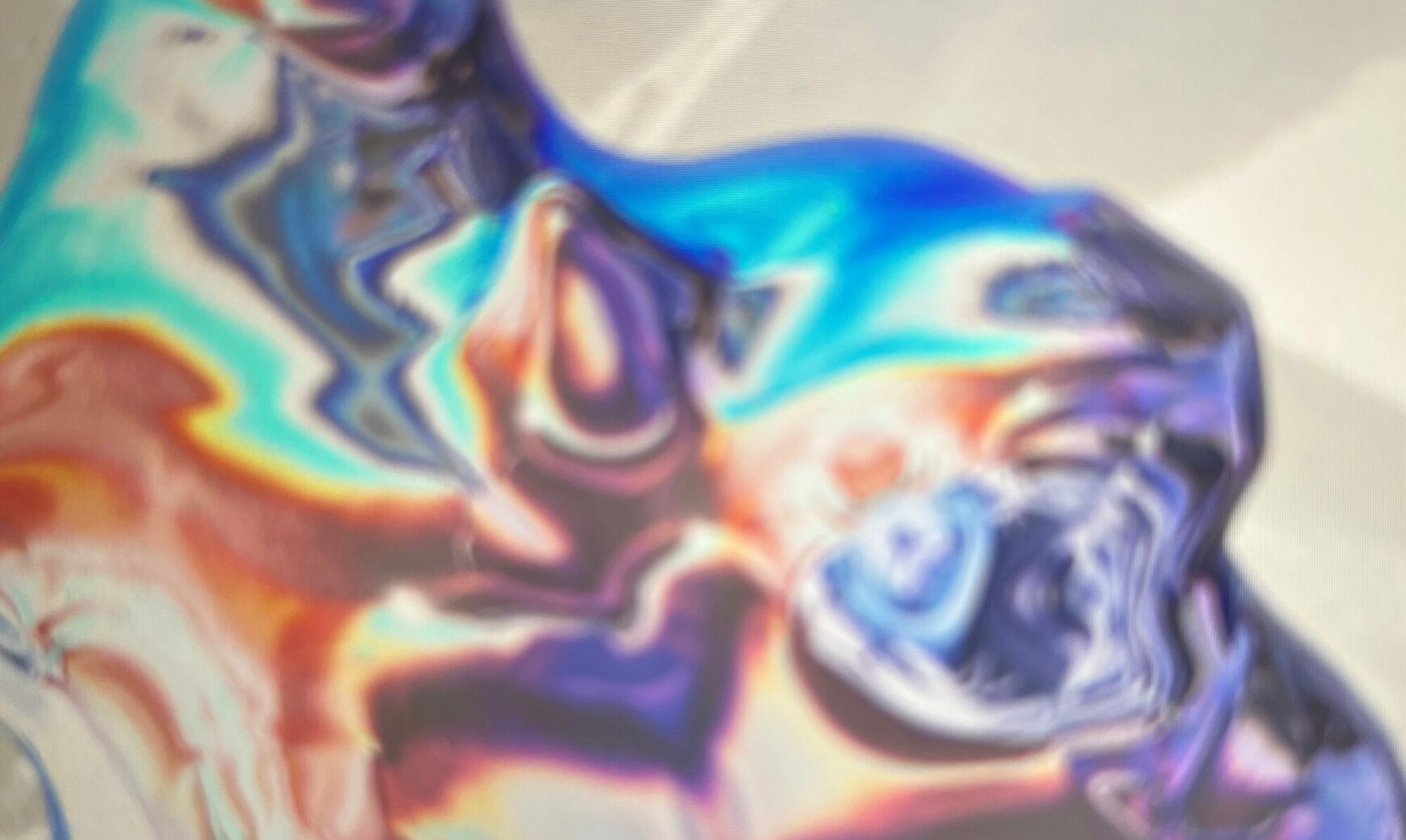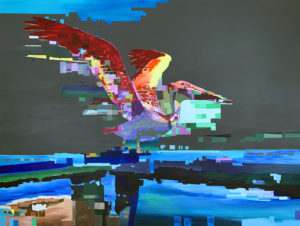California Brown Pelican No.1 and No.2 are consecutive acrylic paintings on canvas, 36” x 48”, from 2019 and 2020, respectively. Using glitch techniques and aesthetics, these works bridge vicissitudes in today’s digital technologies and in our ecological systems.
Ever since I moved to California, I have been fascinated by this particular species of pelicans, whose only breeding colonies are just around the corner from where I live in Silicon Valley, on West Anacapa Island and Santa Barbara Island. In 1970 the Californian brown pelicans were listed as an endangered species, but after the State of California banned the pesticide DDT the population has remarkably increased and is believed to be stable for now.
Yet, given the volatility of environmental and climatic changes and challenges at any time, but especially now, this is far from certain. It’s the inherent instability of ecosystems that moves me, and that I seek to express in my art: the impermanence, transience, and volatility of a species; of a moment in a movement; but also of my perception. At the same time, I am fascinated with the increased instability that emerges within our digital technologies and the unpredictable outcomes and aleatory effects that may arise either through voluntary mechanisms and interfaces or through accidents and contingencies, such as the malfunctions that produce the visual glitch. These works attempt to think these natural and technological agencies together.
The paintings depict two different movements of a single pelican which I observed taking flight at the Santa Barbara Pier. I took pictures and videos on my iPhone, edited them in a nonlinear digital video editing program, and deformed the raw data by sonifying it in an audio editing program (Audacity), before exporting the data back into visual form.
The final glitched/databent video served as the source for my acrylic paintings, which capture but continue to transform an image that arose through the particular and contingent configuration of my computer, its software, and available memory and processing power. Throughout the painting process, which interfaces these technical contingencies with the human ones of my own limited memory and perception, I allow environmental factors to continue influencing each new stage of the work towards its completion. In this way, analog and digital processes converge, with the specific temporalities of computational and perceptual processes transforming one another. Together, these technical and embodied agencies create unpredictable new realities that deviate from my original idea or source, distributing the glitch back into the natural environment.

